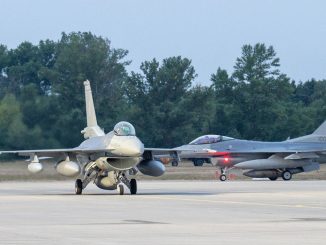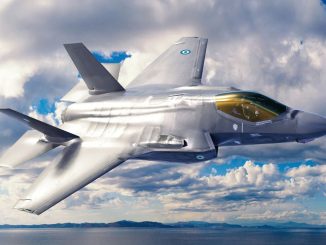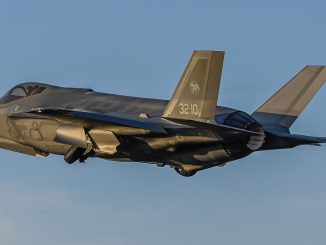
Several years since it was eventually retired from the U.S. Navy, the Grumman F-14 Tomcat remains one of the most loved planes by aviation enthusiasts.
Any article about this iconic fighter plane, still operating with the Islamic Republic of Iran Air Force, its story, capabilities, records and surrounding anecdotes, always become a much debated and commented post on The Aviationist. For this reason, we will continue writing about this legendary plane and its replacement: the F/A-18E/F Super Hornet.
After the Tomcat retirement, not only has the Rhino (as the F/A-18E/F is nicknamed by its aircrews) quickly become the backbone of every Carrier Air Wing (CVW), but it has also replaced some of the oldest Legacy Hornets on the American flattops. Having fulfilled such a difficult task, the Super Hornet has demonstrated to be one of the best multirole jets available today. But could an advanced version of the F-14 have been even better?
LCDR Joe “Smokin” Ruzicka, who was the Radar Intercept Officer (RIO) who flew the last F-14 Demonstration before the Tomcat’s retirement in 2006, last year released an interesting interview to Foxtrot Alpha’s Tyler Rogoway. Among all the other things, Ruzicka explained that, while the Super Hornet is a great plane, it seems like its strength mainly comes from technology. “In the Tomcat, I think you had to be a better aviator because the technology just wasn’t there. It was up to the aircrew to maximize its performance (or minimize it if you sucked).”
That said, one might wonder whether integrating the same technology in the F-14 would have been possible.
By 1987, Grumman realized that the potential for growth had not yet been reached by the F-14 airframe, and they proposed to the U.S. Navy four advanced versions of the F-14, as told by Tim Callaway in Issue 13 “Grumman F-14 Tomcat” of Aviation Classics magazine.
The F-14D Quickstrike was the first proposal: featuring an enhanced version of the APG-71 radar, this advanced Tomcat version would have carried stand off weapons such as the Harpoon, HARM and SLAM (Standoff Land Attack Missile) missiles.
Requiring only new software and minor modifications to existing F-14Ds, the Quickstrike would have been a cost-effective attack platform but it didn’t meet the Advanced Tactical Fighter specification and the U.S. Navy chose the shorter ranged F/A-18E/F.
The second proposal was the ST21, the Super Tomcat for the 21st Century. The latter would have been a structural upgrade to the existing F-14Ds, that would have introduced a new wing glove design and single piece windscreen, while sensors positioned in front of the under fuselage weapons rails would have supplemented the chin pods. Moreover the ST21 would have also received a new engine the F110-GE-129 of 13,154kg of thrust, which would have provided a supercruise speed of Mach 1.3 featuring also thrust vectoring nozzles for greater maneuverability. These new engines would have supplied to the ST21 a tremendous acceleration alongside with a greatly increased range of the aircraft.
Another modification to the standard F-14D would have been the AST21, the Attack Super Tomcat for the 21st Century.
This advanced Tomcat would have been fitted with additional extra bomb pylons under the engine nacelles, a nuclear weapons capability, a modified radar with a Forward Air Controller (FAC) mode and an Integrated Defensive Avionics Package (IDAP) to improve survivability in the air to ground environment. The last proposal, as Callaway explains, was the ASF-14 Advanced Strike Fighter.
The ASF-14 would have been a totally new aircraft with the F-14 shape and it would have taken advantages of the new materials and new technologies developed for the Advanced Tactical Fighter and Advanced Tactical Attack Aircraft programs.
None of these proposals has been built and we’ll never know if an advanced Tomcat would have been better than the actual Super Hornet, but for sure these two fighters are two different aircraft as explained by Ruzicka, who told to Rogoway that the better way to understand the differences between the F-14 and the F/A-18E/F is using the analogy of a muscle car to a mini-van, “with the Tomcat being the former and the Super Hornet being the latter. The muscle car doesn’t have much to it in the way of fancy technology, just some raw speed and the coolness of a Steve McQueen movie, but it gets the job done. The mini-van on the other hand is a very nice car, complete with DVR’s for the kids, Air Conditioning, power windows, and lots of places to put your sippy cup. It’s a great car—-but it’s still a mini-van.”



